The 6 Amazing Benefits of Stretching
You know it’s important to stretch, but do you know why? What are the physical and mental benefits of stretching? Is there a right and a wrong way to stretch?
Here’s everything a dancer needs to know about stretching benefits and techniques to get the best results when you stretch!
1. Stretching increases your flexibility & range of motion.
If you stick to a regular stretching routine, you can actually lengthen your muscles over time, which increases flexibility and can even improve your joints’ range of motion.
Flexibility and range of motion are key for any dancer (and for a dancer's feet!): This is why our dance sneakers feature flexible split soles that move with your stretch and not against it! When your muscles can extend freely, you’re able to execute higher leg extensions, make deeper pliés, and elevate jumps more easily. Range of motion also helps make movements and transitions more fluid and can result in cleaner lines, while helping prevent injury.
2. Stretching increases blood flow & improves your physical performance.
Lengthening muscle fibers and tissues by stretching also means expanding (or dilating) your blood vessels, which helps oxygenated blood flow more easily into your muscles. Oxygenated blood transports the nutrients your muscles need to gain strength and recover after an intense training session or performance, so with every stretch, you may be getting stronger!
But that’s not all: what blood brings to your muscles, it also needs to remove! Better blood flow means it's easier for your body to flush away waste, including the lactic acid that builds up when you’re exercising or dancing.
3. Stretching improves your posture.
Are you slouching while reading this? Tsk, tsk … go stretch!
We’re all guilty of sitting for too-long periods of time, and oftentimes, we’re sitting in unsupportive furniture that causes our muscles to come out of alignment and tighten up. Muscle misalignment and tension can also result from repetitive movements – even dancing!
Stretching regularly helps relieve tension on those tight spots by not only lengthening and loosening the muscle fibers, but also activating alternate muscle groups (your core, for example) and forcing those muscles to support your body. In this way, stretching can bring your body back into balance, so you naturally stand up straighter, sit without slouching or hunching, and achieve cleaner lines when dancing.
4. Stretching helps to relieve and prevent back pain.
Long hours in the studio or on the stage can overwork and put immense pressure on your back muscles, which if not addressed, can result in nagging, chronic pain.
As tension builds in your hamstrings, hips, and lower back, those muscles can start to pull on your spine. Stretching helps loosen muscles, reduce stiffness, and as mentioned above, improve flexibility, all of which relieve pressure on your spine and the surrounding muscles, and knock out pain!
Injured your back? Don’t be surprised if at some point in your recovery plan, your doctor recommends stretching! Increased blood flow from stretching is crucial for healing both major and minor injuries.
While stretching is an excellent way to relieve back pain, doing everything you can to prevent injury is key: that’s why Fuego dance sneakers are designed with patented FlowTec outsoles and premium cushioned insoles to absorb shock, reduce pressure on your muscles and joints, and support your every move!
5. Stretching can calm your mind, ease stress, and even decrease tension headaches.
Stretching can realign more than just your muscles: it’s also an amazing way to reset your mind and refocus your intentions.
The combination of stretching with controlled breathing helps switch off your nervous system’s fight-or-flight setting and shift your mind to a rest & recovery stance. This can lower stress hormones like cortisol while boosting feel-good endorphins that help you achieve presence and calm.
While stretching can help relax your mind, it can also relieve the physical stress in your head! When muscles in your neck, shoulders, or even your face get tense, they compress nerves and restrict blood flow to your head, which results in that dull pain commonly known as a “tension headache.” Stretching can release this upper-body pressure and ease the muscle tightness that pulls on your neck, jaw, and scalp. Before reaching for pain medication, try softly rolling your neck, slowly rotating your shoulders, and gently stretching your upper back – it can work wonders for a tension headache!
6. Stretching has been shown to improve sleep quality.
Stretching before bed is an excellent way to wind down and prepare your body and mind for a restful night. When you stretch, daily muscle tension is relieved while circulation to your parasympathetic nervous system is increased, which helps decrease your heart rate and ease you into rest mode. Try a slow stretching routine before you hit the sheets, and don’t be surprised if you fall asleep faster, sleep more peacefully, and wake up feeling more refreshed than ever.
Dynamic vs. Static Stretching
Now that you know how stretching benefits your mind and body, you need to get familiar with two key styles of stretching: dynamic and static.
Dynamic Stretching
This style is all about movement. Dynamic stretching warms up your muscles and joints and helps them achieve full range of motion. Dynamic stretches are fluid and ideal for loosening tight muscles. Dancers can improve their mobility and reduce the risk of injury with a dynamic stretching routine, which is often practiced before a studio session or performance.
Static Stretching
This common type of stretching is all about holding the position for optimal benefits, and targets specific muscles. Static stretching may also be referred to as a “cool down” stretch practiced at the end of a workout or rehearsal. These slow-paced, focused stretches can gradually lengthen muscle fibers and release tension over time.
How to Stretch Properly
Here are our top three tips for proper stretching:
-
ALWAYS warm up.
A few minutes of movement (jogging in place, for example), gets your blood pumping, which preps your muscle fibers to be more flexible and decreases your chance of injury during and after stretching.
-
BREATHE.
When you don’t breathe in and out fully, you’re not just holding in air, you’re also holding in tension. Inhale and exhale completely to relax your body and your mind and achieve the full benefits of your stretching routine.
-
This is not a quick step!
Don’t rush through your stretching routine: it’s NOT a race! Stretching too rapidly can result in muscle tears and actually increase your risk of injury! So take it slow, move with intention, and get the maximum benefits from your stretching routine.
Stretching is an essential wellness tool for any dancer. Stretching supports everything from flexibility, to posture, to recovery, and can have additional benefits for physical performance and even mental health. The next time you stretch, remember that this part of your routine is intentional and important. You’re not just warming up for today’s rehearsal or tonight’s performance, you’re making a lasting, positive impact on your mind and body.

